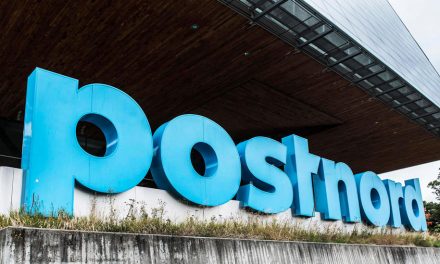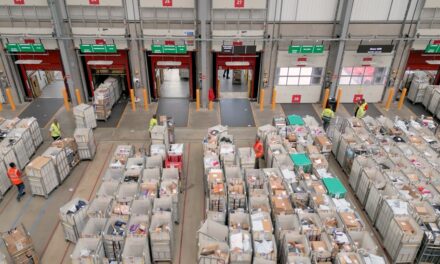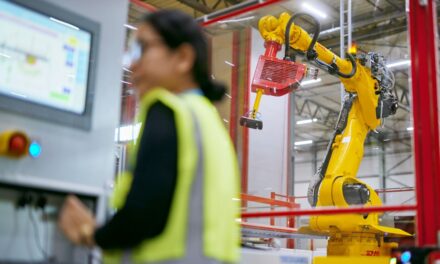
The Power of AI and Machine Learning in Route Planning

In today’s fast-paced, e-commerce world, efficiency in parcel delivery is essential for both businesses and consumers. Jason Fry, Senior Business Development Manager, RouteSmart discusses the force revolutionising parcel and postal delivery.
No one likes waiting for a package they ordered and businesses want to make sure their drivers are delivering efficiently and safely.
With an increasing number of parcels being shipped globally, route planning and optimization are crucial to reducing costs, minimizing delivery times, and improving the customer experience.
In recent years, artificial intelligence and machine learning have emerged as powerful tools to revolutionise route planning in the postal industry. However, businesses need to recognize the importance of having a quality route-planning partner who can use the power of AI and machine learning.
“AI algorithms can do many things the human brain alone cannot,” RouteSmart Technologies Director of Research and Development Damon Gulczynski said. “But the most powerful thinker in known existence is a human who knows how to use AI effectively.”
Understanding the Challenge
Efficient route planning is a complex problem, especially for parcel and postal delivery companies that must consider factors such as multiple delivery points, varying package sizes, traffic conditions, safety issues, and time constraints. Traditional route planning methods often rely on manual processes, which can be time-consuming, error-prone, and suboptimal. This is where data-driven route planning with artificial intelligence and machine learning come into play, offering the potential to transform route planning into an adaptive process.
Data-Driven Decision Making
AI and ML rely on data, and parcel and postal delivery firms generate vast amounts of data daily. This information can include information about package destinations, historical delivery times, traffic patterns, weather conditions, and even the behaviour of individual delivery personnel. Machine learning algorithms can analyse this data to identify patterns and trends that human planners might overlook.
For instance, by analysing historical delivery data, ML models can identify which streets are consistently congested at certain times of the day and suggest routes to avoid delays. These models can also consider external factors like holidays, special events, or road closures to adapt delivery routes in real-time.
Predictive Analytics
Predictive analytics, a subset of AI and ML, plays a crucial role in optimising postal route planning. By analysing historical data and leveraging machine learning algorithms, postal delivery services can predict future demand with high accuracy. This helps in allocating resources effectively, ensuring that the right number of vehicles and personnel are available to handle peak delivery times, thus reducing operational costs and enhancing service quality.
Predictive analytics can also help in identifying delivery patterns. For instance, ML algorithms can detect that certain customers prefer receiving packages in the morning, while others prefer afternoon deliveries. Postal services can then optimise routes to match these preferences, resulting in higher customer satisfaction.
Dynamic Routing
One of the most significant advantages of AI and ML in route planning is their ability to adapt to real-time changes. Dynamic routing involves continuously optimising delivery routes based on current conditions. For example, if a delivery vehicle encounters unexpected traffic or a road closure, AI algorithms can quickly recalculate the route to minimise delays.
Furthermore, machine learning can account for the behaviours of individual drivers. By analysing data on driver performance and preferences, algorithms can assign deliveries to drivers in a way that matches their strengths and working hours, ensuring optimal efficiency, driver safety, and job satisfaction.
Geospatial Analysis
Geospatial analysis is another essential component of AI-driven route planning. It involves using geographic information systems (GIS) and satellite data to optimise routes based on spatial factors. For postal services, this means considering the precise location of delivery points and the road network.
AI algorithms can calculate the most efficient order for making deliveries, taking into account factors such as distance, traffic, and package size. By optimising the sequence of stops, delivery times can be reduced, and fuel consumption can be minimised, resulting in cost savings and reduced carbon emissions.
Machine Learning Models for Vehicle Routing
Several ML models are particularly well-suited for vehicle routing in parcel and postal services:
Genetic Algorithms: These optimisation algorithms mimic the process of natural selection to find near-optimal routes. They can handle complex routing problems with multiple constraints, making them suitable for postal services’ diverse needs.
Reinforcement Learning: By using rewards and penalties, reinforcement learning models can learn to navigate the best routes over time. These models continuously improve their performance as they gather more data.
Neural Networks: Deep learning models, such as Convolutional Neural Networks (CNNs) and Recurrent Neural Networks (RNNs), can process large amounts of spatial and temporal data to make accurate predictions and optimise routes.
Ethical Considerations and Challenges
While AI and ML offer substantial benefits to postal route planning, there are ethical and practical challenges to address. Privacy concerns, data security, driver safety, and fairness in route allocation must be carefully managed. Moreover, there can be resistance from human drivers or employees who fear job displacement.
Artificial intelligence and machine learning are transforming parcel and postal delivery by making route planning more efficient, data-driven, safe, and adaptable. These technologies enable predictive analytics, dynamic routing, geospatial analysis, and the use of advanced ML models to optimise vehicle routes. Numerous case studies and success stories demonstrate the real-world impact of AI and ML in this domain.
As postal services continue to evolve to meet the demands of the digital age, embracing AI and ML in route planning will become increasingly crucial. By doing so, postal services can reduce costs, improve service quality, reduce environmental impact, maximise driver safety, and stay competitive in an ever-changing landscape. However, it is vital to address ethical and practical challenges while ensuring that these technologies enhance, rather than replace, the role of human workers in the industry.












